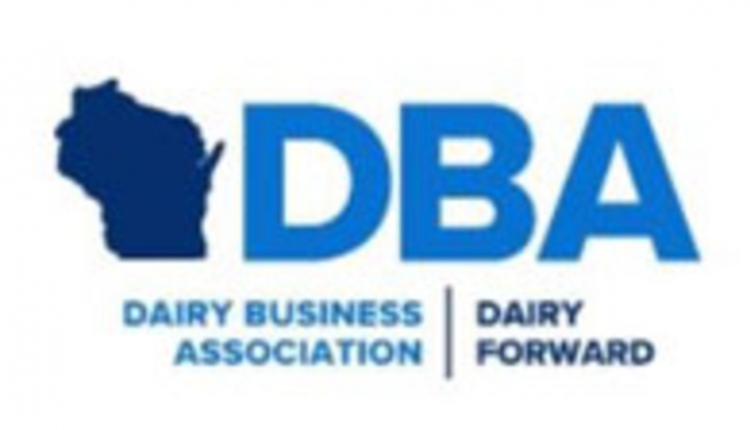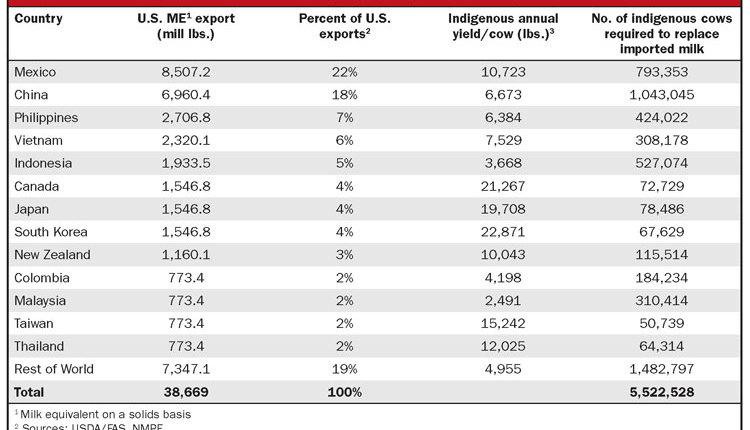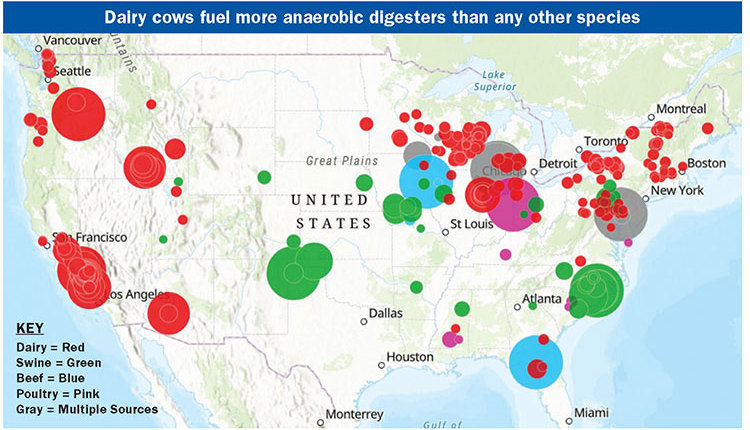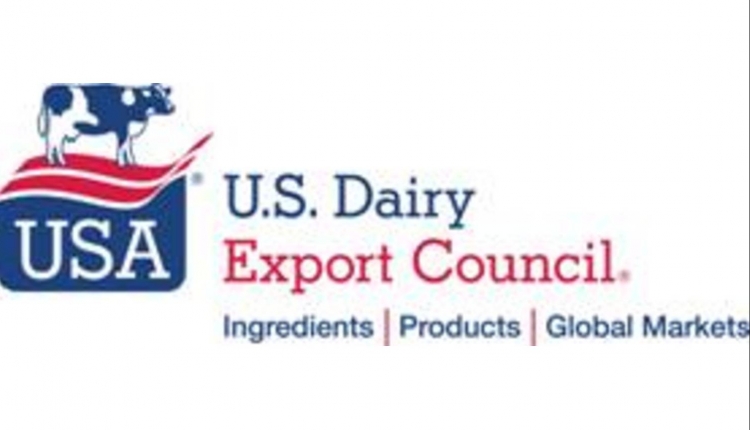The author is a research assistant professor in the department of agricultural and applied economics at the University of Missouri.
The process that could ultimately lead to a California Federal Milk Marketing Order (FMMO) continues to move forward. USDA recently released its impact analysis that provides a quantitative assessment of each proposal to establish an FMMO in California.

While the initial analysis took place at USDA offices in Washington D.C.,
the next step in California's Federal Milk Marketing Order hearing process will take place in Clovis, Calif.
The USDA analysis shows that all four proposals raise All-Milk prices in California, but the magnitude of the change is quite different between some of the proposals. USDA's analysis of the cooperatives' proposal developed by California Dairies Inc., Dairy Farmers of America Inc., and Land O'Lakes Inc., shows that the All-Milk price in California rises, on average, by $1.03 per cwt. relative to maintaining the current state order.
Two other proposals that offer modifications to the cooperatives' proposal are the California Producer-Handler Association (CPHA) proposal and the Ponderosa Dairy proposal. Despite containing some key changes relative to the cooperatives' proposal, the expected effect from USDA's analysis shows that the California All-Milk price change remains similar across all three options.
The last plan analyzed by USDA came from the Dairy Institute of California. USDA analysis shows that the institute's proposal for the California All-Milk price goes up 10 cents per cwt.
Forward-looking economic models have been used to analyze agricultural policy for decades. It is important to recall that all economic models are simplifications of the real world and will not capture every market effect.
The results provided by USDA are shown as changes from their baseline, which is consistent with the long-term USDA baseline released in early 2015. The long-term USDA projection for the U.S. All-Milk price beginning in 2017 (the analysis assumes that any new California FMMO regulations would take effect beginning January 1, 2017) is $18.30 per cwt., rising to $19.20 per cwt. by 2024. U.S. milk production is estimated at 221.8 billion pounds in 2017, growing to 249.4 billion pounds by 2024. This is the starting point.
USDA identified key areas where this proposal differs from current regulations in California's state order. They are: "fundamentally different methods to address milk pricing, classification, treatment of out-of-state milk, treatment of producer-handlers, transportation allowances and credits, and fluid milk fortification."
Perhaps the single most important change under the cooperatives' proposal was the move to FMMO pricing in California. The results show that the new California federal order Class III price would average $1.46 per cwt. higher than continuing the current California 4b price. The largest drop occurs in Class I fluid milk prices, which fall an average of 44 cents per cwt.
Overall, the California All-Milk price could be $1.03 per cwt. higher under the proposal and may result in additional milk production. This 540 million pound gain in California milk flow results in downward pressure on all dairy product prices. The most notable is an average decline of 2.6 cents for butter prices.
One question that remains unanswered in USDA's analysis is whether the cooperative-base programs that currently operate in California would moderate the growth. These programs remain extremely difficult for any model to incorporate since the exact details behind these cooperative-base programs remain difficult to determine. At the moment, these base programs appear to have successfully reduced California milk flow.
Lower dairy product prices result in slightly lower milk prices in many other areas of the U.S. Even with lower All-Milk prices in other parts of the country, the U.S. All-Milk price averages 28 cents per cwt. higher due to the sharp rise in the California All-Milk price. The exact specification and estimated parameters of the USDA model is critical in determining the region by region effects.
The CPHA proposal shows little difference relative to the cooperatives' proposal in the overall results but differs significantly in the area of "exempt" quota for certain California producer-handlers. The cooperatives' proposal eliminated "exempt" quota while the CPHA proposal would continue to recognize it.
The Ponderosa Dairy proposal differs from the cooperatives' proposal in terms of how out-of-state milk is handled. Under the cooperatives' proposal, that milk could be pooled and would receive the nonquota blend price. The Ponderosa Dairy proposal would allow out-of-state milk received at any California plant with fluid milk sales to be paid at a level equal to or greater than the plant blend price.
The proposal brought forth by the Dairy Institute of California would adopt the same FMMO classification scheme as in the cooperatives' proposal. However, the FMMO class prices would use Western dairy product prices and manufacturing costs. If Western prices and costs are not available, then default values provided in the institute's proposal would be used instead.
One other difference under the institute's proposal relates to quota, as producers would have the ability prior to each month to opt out of the quota program and then receive the FMMO blend price. However, once a decision is made to leave the quota program, then a producer is permanently out of the quota program. In addition, the institute's proposal would give flexibility on pooling to those plants that don't bottle milk.
The USDA results under the institute's proposal show a drop in U.S. cheese production and a gain in Cheddar cheese price. That has a positive effect on All-Milk prices in the Upper Midwest, which average 24 cents per cwt. higher, on average. Although the California FMMO Class III price averages 97 cents higher than the baseline California 4b price, other California class prices are lower due to lower butter and nonfat dry milk prices. That results in the California All-Milk price rising, on average, by only 10 cents per cwt. as the higher Class III price is muted by the lower prices for other classes of milk. All milk prices in many regions of the country are lower by the end of the analysis period due to the lower butter and nonfat dry milk prices.
The USDA analysis also shows that producers will quickly exit the quota program to take advantage of the higher FMMO blend price relative to the weighted quota price.
The implementation of the details of each of the proposals are critical to USDA's model results. If certain program features were assumed to be implemented differently, the results would change. Industry issues that are not covered in the model structure, such as cooperative base programs currently in operation in California, will affect the results as well.
These results should remind everyone in the U.S. dairy industry that this is not just a California issue. The effects of a California FMMO will ripple outside of California. Though effects may be small in other areas of the country, all those with dairy interests should examine USDA's impact analysis carefully.
Click here to return to the Dairy Policy E-Sources
150910_565
The process that could ultimately lead to a California Federal Milk Marketing Order (FMMO) continues to move forward. USDA recently released its impact analysis that provides a quantitative assessment of each proposal to establish an FMMO in California.

the next step in California's Federal Milk Marketing Order hearing process will take place in Clovis, Calif.
The USDA analysis shows that all four proposals raise All-Milk prices in California, but the magnitude of the change is quite different between some of the proposals. USDA's analysis of the cooperatives' proposal developed by California Dairies Inc., Dairy Farmers of America Inc., and Land O'Lakes Inc., shows that the All-Milk price in California rises, on average, by $1.03 per cwt. relative to maintaining the current state order.
Two other proposals that offer modifications to the cooperatives' proposal are the California Producer-Handler Association (CPHA) proposal and the Ponderosa Dairy proposal. Despite containing some key changes relative to the cooperatives' proposal, the expected effect from USDA's analysis shows that the California All-Milk price change remains similar across all three options.
The last plan analyzed by USDA came from the Dairy Institute of California. USDA analysis shows that the institute's proposal for the California All-Milk price goes up 10 cents per cwt.
Economic modeling assumptions
Forward-looking economic models have been used to analyze agricultural policy for decades. It is important to recall that all economic models are simplifications of the real world and will not capture every market effect.
The results provided by USDA are shown as changes from their baseline, which is consistent with the long-term USDA baseline released in early 2015. The long-term USDA projection for the U.S. All-Milk price beginning in 2017 (the analysis assumes that any new California FMMO regulations would take effect beginning January 1, 2017) is $18.30 per cwt., rising to $19.20 per cwt. by 2024. U.S. milk production is estimated at 221.8 billion pounds in 2017, growing to 249.4 billion pounds by 2024. This is the starting point.
USDA identified key areas where this proposal differs from current regulations in California's state order. They are: "fundamentally different methods to address milk pricing, classification, treatment of out-of-state milk, treatment of producer-handlers, transportation allowances and credits, and fluid milk fortification."
Looking closely at components
Perhaps the single most important change under the cooperatives' proposal was the move to FMMO pricing in California. The results show that the new California federal order Class III price would average $1.46 per cwt. higher than continuing the current California 4b price. The largest drop occurs in Class I fluid milk prices, which fall an average of 44 cents per cwt.
Overall, the California All-Milk price could be $1.03 per cwt. higher under the proposal and may result in additional milk production. This 540 million pound gain in California milk flow results in downward pressure on all dairy product prices. The most notable is an average decline of 2.6 cents for butter prices.
One question that remains unanswered in USDA's analysis is whether the cooperative-base programs that currently operate in California would moderate the growth. These programs remain extremely difficult for any model to incorporate since the exact details behind these cooperative-base programs remain difficult to determine. At the moment, these base programs appear to have successfully reduced California milk flow.
Lower dairy product prices result in slightly lower milk prices in many other areas of the U.S. Even with lower All-Milk prices in other parts of the country, the U.S. All-Milk price averages 28 cents per cwt. higher due to the sharp rise in the California All-Milk price. The exact specification and estimated parameters of the USDA model is critical in determining the region by region effects.
The CPHA proposal shows little difference relative to the cooperatives' proposal in the overall results but differs significantly in the area of "exempt" quota for certain California producer-handlers. The cooperatives' proposal eliminated "exempt" quota while the CPHA proposal would continue to recognize it.
The Ponderosa Dairy proposal differs from the cooperatives' proposal in terms of how out-of-state milk is handled. Under the cooperatives' proposal, that milk could be pooled and would receive the nonquota blend price. The Ponderosa Dairy proposal would allow out-of-state milk received at any California plant with fluid milk sales to be paid at a level equal to or greater than the plant blend price.
The institute's proposal
The proposal brought forth by the Dairy Institute of California would adopt the same FMMO classification scheme as in the cooperatives' proposal. However, the FMMO class prices would use Western dairy product prices and manufacturing costs. If Western prices and costs are not available, then default values provided in the institute's proposal would be used instead.
One other difference under the institute's proposal relates to quota, as producers would have the ability prior to each month to opt out of the quota program and then receive the FMMO blend price. However, once a decision is made to leave the quota program, then a producer is permanently out of the quota program. In addition, the institute's proposal would give flexibility on pooling to those plants that don't bottle milk.
The USDA results under the institute's proposal show a drop in U.S. cheese production and a gain in Cheddar cheese price. That has a positive effect on All-Milk prices in the Upper Midwest, which average 24 cents per cwt. higher, on average. Although the California FMMO Class III price averages 97 cents higher than the baseline California 4b price, other California class prices are lower due to lower butter and nonfat dry milk prices. That results in the California All-Milk price rising, on average, by only 10 cents per cwt. as the higher Class III price is muted by the lower prices for other classes of milk. All milk prices in many regions of the country are lower by the end of the analysis period due to the lower butter and nonfat dry milk prices.
The USDA analysis also shows that producers will quickly exit the quota program to take advantage of the higher FMMO blend price relative to the weighted quota price.
A moving model
The implementation of the details of each of the proposals are critical to USDA's model results. If certain program features were assumed to be implemented differently, the results would change. Industry issues that are not covered in the model structure, such as cooperative base programs currently in operation in California, will affect the results as well.
These results should remind everyone in the U.S. dairy industry that this is not just a California issue. The effects of a California FMMO will ripple outside of California. Though effects may be small in other areas of the country, all those with dairy interests should examine USDA's impact analysis carefully.
150910_565








